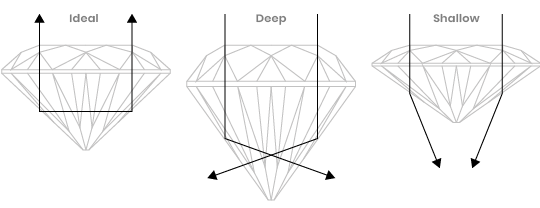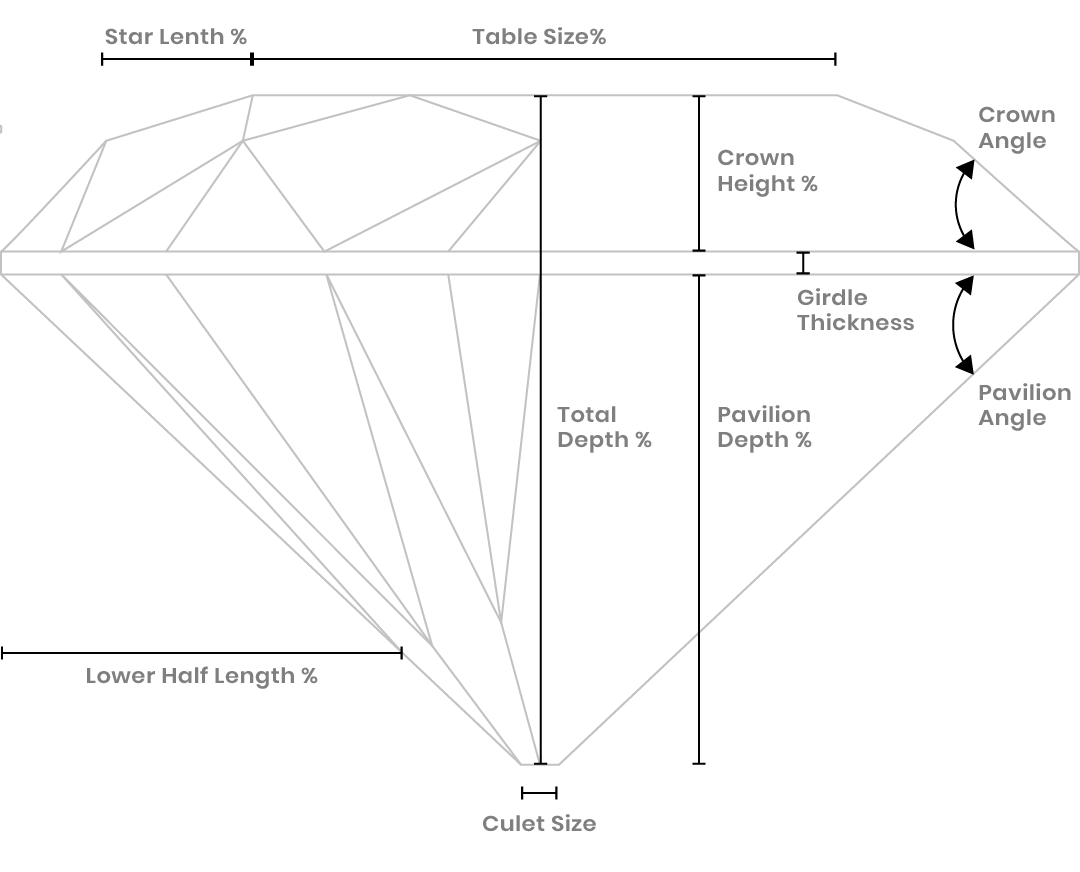Diamond Education
The 4 C'sDiamond Anatomy & Cut Quality
Every diamond is different and the value can vary greatly.
Diamonds are evaluated according to the 4 C’s: cut, clarity, carat and color.


Understanding the 4 C’s of Diamonds Shopping
Gem quality diamonds are formed by nature over billions of years.
The 4 C’s are factors that when combined help determine the value of a diamond.
Use the factors when picking a diamond for it’s rarity and quality.
Clarity
A clear diamond has the greatest clarity.
Clarity is graded on the absence of inclusions and blemishes in a diamond.
Internal characteristics are known as inclusions. External characteristics are known as blemishes.
Most cannot be seen by the untrained eye. Our experts will guide us through the process.


Diamond Clarity Descriptions
FL, IF. Flawless means no internal and no external flaws. Internally flawless means no internal flaws.
VVS1, VVS2, are very, very difficult to see. Very difficult to see inclusions at 10x magnification.
VS1, VS2 very, slightly included. Inclusions are not typically seen with the unaided eye.
SI1, SI2 Slightly included. Inclusions are visible at 10x magnification and can be seen with the unaided eye.
I1, I2, I3 Included. Inclusions are visible with the unaided eye.
Cut
Often thought of as the shape of the diamond it is actually about how the light is reflected.
Cut is responsible for brilliance, fire, and scintillation of a diamond.


Diamond Cut Descriptions
Brilliance is the combination of all of the white light reflected from the surface and the inside of the a diamond
Fire are flashes of color you see in a polished diamond.
Scintillation are flashes of light you see when the diamond, the light, or the observer moves
For the best results, proportions of its facets, symmetry, the relationship of its weight to its diameter, girdle thickness, and quality of its polish have to come together in just the right way.
Color
A diamond’s color is measured using the GIA® D-to-Z diamond color grading system.
This system is the most widely accepted for grading.
All diamonds are evaluated based on the absence of color.


Diamond Color Descriptions
No hue = higher value
This lack of color is measured in degrees based on comparisons with masterstones, made while viewing under controlled lighting and conditions. This means that regardless of where in the world the diamond is graded it will be under the same conditions and should receive the same grade. These color distinctions are invisible to the untrained eye and should be left to a trained diamond grader.
Carat (Size)
In addition to color, cut, and clarity, carat weight directly correlates to price of the diamond. This happens because the supply is low (larger = rarer) and demand is high (larger = more popular).


Diamond Sizing Descriptions
1 Carat = 200 milligrams
1 Point = 0.01 carat = 1/100 of a carat
Diamonds of equal weight are not necessarily the same size. Different proportions and depths will result in different size and weight combinations.
Get In Touch
Email Us
Contact Info
909 W. Midway Road
Fort Pierce, FL 34982
(772) 577-6035
Store Hours
T - F : 9am–4pm
Sat : 10am–3pm
Sun & Mon: Closed
